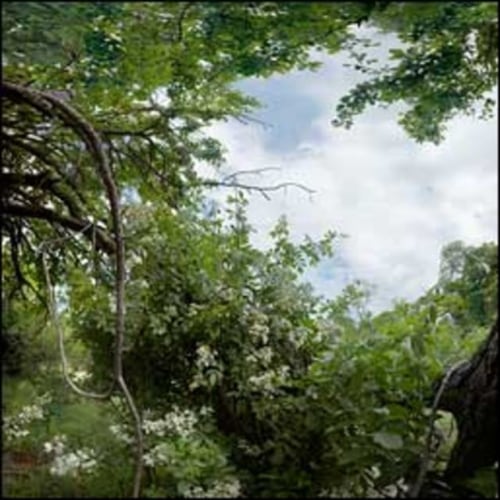
The only trouble with Anne Rowland’s exhibit at Hemphill is that you may find yourself fighting between looking at her images and looking at how they were made. Rowland’s past works involved photographing multiple close-ups of objects, then manually stitching them together in Photoshop; the resulting images had precarious depth of field and multiple vanishing points. For this body of work, shot on a cattle farm in Bluemont, Va., she used a GigaPan programmable arm—typically used for photographing panoramas—which is equipped with software that does the stiching itself. Rowland positioned the camera to make photographic close-ups that reveal all the limitations of the technology, creating visual glitches that recall her past works. Pick a section of nearly any image in the gallery and observe how a vine or a branch transforms from fine detail to a soft blur to hard-edge pixels, regardless of its placement in the foreground or background. The otherwise mundane bucolic subjects—gnarled trees, bundles of vines, grazing livestock—are transformed into surreal images, reminding us that there is beauty just beyond the hell of northern Virginia’s suburban sprawl.